Gabapentin
Blenheim Pharmacal, Inc.
Blenheim Pharmacal, Inc.
Gabapentin Capsules, USP
FULL PRESCRIBING INFORMATION: CONTENTS*
- GABAPENTIN DESCRIPTION
- CLINICAL PHARMACOLOGY
- GABAPENTIN INDICATIONS AND USAGE
- GABAPENTIN CONTRAINDICATIONS
- WARNINGS
- PRECAUTIONS
- GABAPENTIN ADVERSE REACTIONS
- DRUG ABUSE AND DEPENDENCE
- OVERDOSAGE
- GABAPENTIN DOSAGE AND ADMINISTRATION
- HOW SUPPLIED
FULL PRESCRIBING INFORMATION
GABAPENTIN DESCRIPTION
9172

a1a2
CLINICAL PHARMACOLOGY
Mechanism of Action
AB
In vitro
Pharmacokinetics and Drug Metabolism
Oral Bioavailability
max
Distribution
min
Elimination
Special Populations: Patients With Renal Insufficiency ,
DOSAGE AND ADMINISTRATION, Table 6
Special Populations
Adult Patients With Renal Insufficiency
DOSAGE AND ADMINISTRATION
Hemodialysis
DOSAGE AND ADMINISTRATION
Hepatic Disease
Age
PRECAUTIONS, Geriatric Use DOSAGE AND ADMINISTRATION
Pediatric
DOSAGE AND ADMINISTRATION
Gender
Race
Clinical Studies
Postherpetic Neuralgia
| Study | Study Duration |
Gabapentin (mg/day)a
Target Dose |
Patients Receiving Gabapentin |
Patients Receiving Placebo |
|---|---|---|---|---|
|
a Given in 3 divided doses (TID) |
||||
| 1 |
8 weeks |
3600 |
113 |
116 |
| 2 |
7 weeks |
1800, 2400 |
223 |
111 |
| |
|
Total |
336 |
227 |
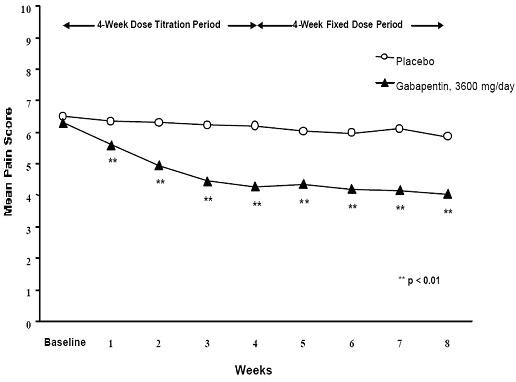
Figure 1. Weekly Mean Pain Scores (Observed Cases in ITT Population): Study 1
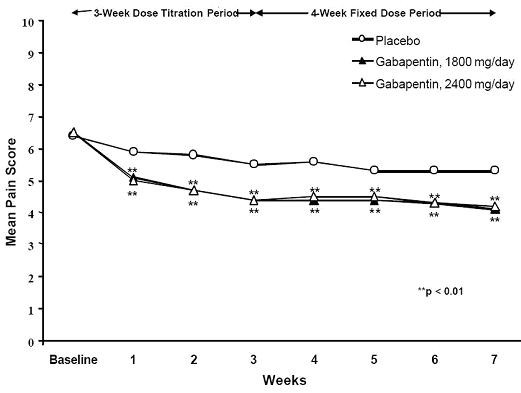
Figure 2. Weekly Mean Pain Scores (Observed Cases in ITT Population): Study 2
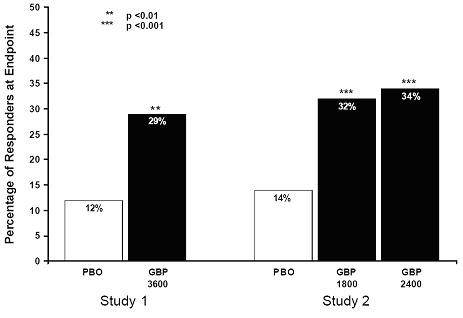
Figure 3. Proportion of Responders (patients with ≥50% reduction in pain score) at Endpoint: Controlled PHN Studies
Epilepsy
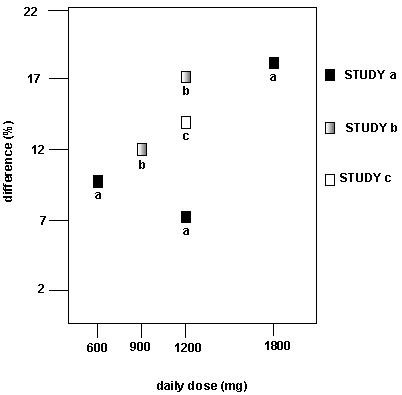
Figure 4. Responder Rate in Patients Receiving Gabapentin Expressed as a Difference from Placebo by Dose and Study: Adjunctive Therapy Studies in Patients ≥12 Years of Age with Partial Seizures
GABAPENTIN INDICATIONS AND USAGE
Postherpetic Neuralgia
Epilepsy
GABAPENTIN CONTRAINDICATIONS
WARNINGS
Suicidal Behavior and Ideation
| Indication | Placebo Patients with Events Per 1000 Patients |
Drug Patients with Events Per 1000 Patients |
Relative Risk: Incidence of Events in Drug Patients/Incidence in Placebo Patients |
Risk Difference: Additional Drug Patients with Events Per 1000 Patients |
|---|---|---|---|---|
| Epilepsy |
1 |
3.4 |
3.5 |
2.4 |
| Psychiatric |
5.7 |
8.5 |
1.5 |
2.9 |
| Other |
1 |
1.8 |
1.9 |
0.9 |
| Total |
2.4 |
4.3 |
1.8 |
1.9 |
Neuropsychiatric Adverse Events—Pediatric Patients 3 to 12 years of age
Withdrawal Precipitated Seizure, Status Epilepticus
Tumorigenic Potential
in vivo PRECAUTIONS: Carcinogenesis, Mutagenesis, Impairment of Fertility
in situ
Sudden and Unexplained Death in Patients With Epilepsy
PRECAUTIONS
Information for Patients
Drug Interactions
PRECAUTIONS, Pregnancy
Laboratory Tests
Drug Interactions
In vitromax
maxmax
PRECAUTIONS
max
®
Drug/Laboratory Test Interactions
®
Carcinogenesis, Mutagenesis, Impairment of Fertility
in vitro
in vitroin vivoin vitroin vitroin vivoin vivoin vivo
2
Pregnancy
Teratogenic effects
Pregnancy Category C.
22
2222
2
in utero
Nursing Mothers
Pediatric Use
CLINICAL PHARMACOLOGY, Clinical Studies
Geriatric Use
CLINICAL PHARMACOLOGY, ADVERSE REACTIONS, DOSAGE AND ADMINISTRATION
GABAPENTIN ADVERSE REACTIONS
Postherpetic Neuralgia
Incidence in Controlled Clinical Trials
|
a Reported as blurred vision |
||
|
Body System/Preferred Term
|
Gabapentin
N=336 % |
Placebo
N=227 % |
|
Body as a Whole
|
||
| Asthenia |
5.7 |
4.8 |
| Infection |
5.1 |
3.5 |
| Headache |
3.3 |
3.1 |
| Accidental injury |
3.3 |
1.3 |
| Abdominal pain |
2.7 |
2.6 |
|
Digestive System
|
||
| Diarrhea |
5.7 |
3.1 |
| Dry mouth |
4.8 |
1.3 |
| Constipation |
3.9 |
1.8 |
| Nausea |
3.9 |
3.1 |
| Vomiting |
3.3 |
1.8 |
| Flatulence |
2.1 |
1.8 |
|
Metabolic and
Nutritional Disorders |
||
| Peripheral edema |
8.3 |
2.2 |
| Weight gain |
1.8 |
0 |
| Hyperglycemia |
1.2 |
0.4 |
|
Nervous System
|
||
| Dizziness |
28 |
7.5 |
| Somnolence |
21.4 |
5.3 |
| Ataxia |
3.3 |
0 |
| Thinking abnormal |
2.7 |
0 |
| Abnormal gait |
1.5 |
0 |
| Incoordination |
1.5 |
0 |
| Amnesia |
1.2 |
0.9 |
| Hypesthesia |
1.2 |
0.9 |
|
Respiratory System
|
||
| Pharyngitis |
1.2 |
0.4 |
|
Skin and Appendages
|
||
| Rash |
1.2 |
0.9 |
|
Special Senses
|
||
| Amblyopiaa
|
2.7 |
0.9 |
| Conjunctivitis |
1.2 |
0 |
| Diplopia |
1.2 |
0 |
| Otitis media |
1.2 |
0 |
Epilepsy
WARNINGS, Neuropsychiatric Adverse Events
Incidence in Controlled Clinical Trials
| Body System/Adverse Event | Gabapentina
N=543 % |
Placeboa
N=378 % |
|---|---|---|
|
a Plus background antiepileptic drug therapy b Amblyopia was often described as blurred vision. |
||
|
Body As A Whole
|
||
| Fatigue |
11 |
5 |
| Weight Increase |
2.9 |
1.6 |
| Back Pain |
1.8 |
0.5 |
| Peripheral Edema |
1.7 |
0.5 |
|
Cardiovascular
|
||
| Vasodilatation |
1.1 |
0.3 |
|
Digestive System
|
||
| Dyspepsia |
2.2 |
0.5 |
| Mouth or Throat Dry |
1.7 |
0.5 |
| Constipation |
1.5 |
0.8 |
| Dental Abnormalities |
1.5 |
0.3 |
| Increased Appetite |
1.1 |
0.8 |
|
Hematologic and Lymphatic Systems
|
||
| Leukopenia |
1.1 |
0.5 |
|
Musculoskeletal System
|
||
| Myalgia |
2 |
1.9 |
| Fracture |
1.1 |
0.8 |
|
Nervous System
|
||
| Somnolence |
19.3 |
8.7 |
| Dizziness |
17.1 |
6.9 |
| Ataxia |
12.5 |
5.6 |
| Nystagmus |
8.3 |
4 |
| Tremor |
6.8 |
3.2 |
| Nervousness |
2.4 |
1.9 |
| Dysarthria |
2.4 |
0.5 |
| Amnesia |
2.2 |
0 |
| Depression |
1.8 |
1.1 |
| Thinking Abnormal |
1.7 |
1.3 |
| Twitching |
1.3 |
0.5 |
| Coordination Abnormal |
1.1 |
0.3 |
|
Respiratory System
|
||
| Rhinitis |
4.1 |
3.7 |
| Pharyngitis |
2.8 |
1.6 |
| Coughing |
1.8 |
1.3 |
|
Skin and Appendages
|
||
| Abrasion |
1.3 |
0 |
| Pruritus |
1.3 |
0.5 |
|
Urogenital System
|
||
| Impotence |
1.5 |
1.1 |
|
Special Senses
|
||
| Diplopia
|
5.9 |
1.9 |
| Amblyopiab
|
4.2 |
1.1 |
|
Laboratory Deviations
|
||
| WBC Decreased
|
1.1 |
0.5 |
| Body System/Adverse Event | Gabapentina
N=119 % |
Placeboa
N=128 % |
|---|---|---|
|
a Plus background antiepileptic drug therapy |
||
|
Body As A Whole
|
||
| Viral Infection |
10.9 |
3.1 |
| Fever |
10.1 |
3.1 |
| Weight Increase |
3.4 |
0.8 |
| Fatigue |
3.4 |
1.6 |
|
Digestive System
|
||
| Nausea and/or Vomiting |
8.4 |
7 |
|
Nervous System
|
||
| Somnolence |
8.4 |
4.7 |
| Hostility |
7.6 |
2.3 |
| Emotional Lability |
4.2 |
1.6 |
| Dizziness |
2.5 |
1.6 |
| Hyperkinesia |
2.5 |
0.8 |
|
Respiratory System
|
||
| Bronchitis |
3.4 |
0.8 |
| Respiratory Infection |
2.5 |
0.8 |
Other events in more than 2% of pediatric patients 3 to 12 years of age but equally or more frequent in the placebo group included: pharyngitis, upper respiratory infection, headache, rhinitis, convulsions, diarrhea, anorexia, coughing, and otitis media.
Other Adverse Events Observed During All Clinical Trials
Clinical Trials in Adults and Adolescents (Except Clinical Trials in Neuropathic Pain)
Body As A Whole: Frequent: Infrequent: Rare:
Cardiovascular System: Frequent: Infrequent: Rare:
Digestive System: Frequent:Infrequent: Rare:
Endocrine System: Rare:
Hematologic and Lymphatic System: Frequent: Infrequent: Rare:
Musculoskeletal System: Frequent: Infrequent: Rare:
Nervous System: Frequent: Infrequent: Rare:
Respiratory System: Frequent:Infrequent: Rare:
Dermatological: Infrequent: Rare:
Urogenital System: Infrequent: Rare:
Special Senses: Frequent: Infrequent: Rare:
Clinical trials in Pediatric Patients With Epilepsy
Body as a Whole:
Digestive System:
Hemic and Lymphatic System:
Nervous System:
Psychobiologic Function:
Respiratory System:
Clinical Trials in Adults With Neuropathic Pain of Various Etiologies
Body as a Whole: Infrequent:Rare:
Cardiovascular System: Infrequent:Rare:
Digestive System: Infrequent:Rare:
Endocrine System: Infrequent:
Hemic and Lymphatic System: Infrequent:Rare:
Metabolic and Nutritional: Infrequent:Rare:
Musculoskeletal: Infrequent:Rare:
Nervous System: Frequent:Infrequent:Rare:
Respiratory System: Infrequent:Rare:
Skin and Appendages: Infrequent: Rare:
Special Senses: Infrequent:Rare:
Urogenital System: Infrequent:Rare:, ,
Postmarketing and Other Experience
DRUG ABUSE AND DEPENDENCE
OVERDOSAGE
GABAPENTIN DOSAGE AND ADMINISTRATION
Postherpetic Neuralgia
Epilepsy
Patients >12 years of age
Pediatric Patients Age 3 to 12 years
CLINICAL PHARMACOLOGY, Pediatrics
Dosage in Renal Impairment
Cr
CrCr
CrCr
Cr
| Renal Function Creatinine Clearance (mL/min) |
Total Daily Dose Range (mg/day) |
Dose Regimen (mg) | ||||
|---|---|---|---|---|---|---|
|
a For patients with creatinine clearance <15 mL/min, reduce daily dose in proportion to creatinine clearance (e.g., patients with a creatinine clearance of 7.5 mL/min should receive one-half the daily dose that patients with a creatinine clearance of 15 mL/min receive). b Patients on hemodialysis should receive maintenance doses based on estimates of creatinine clearance as indicated in the upper portion of the table and a supplemental post-hemodialysis dose administered after each 4 hours of hemodialysis as indicated in the lower portion of the table. |
||||||
| ≥60 |
900-3600 |
300 TID |
400 TID |
600 TID |
800 TID |
1200 TID |
| >30-59 |
400-1400 |
200 BID |
300 BID |
400 BID |
500 BID |
700 BID |
| >15-29 |
200-700 |
200 QD |
300 QD |
400 QD |
500 QD |
700 QD |
| 15a
|
100-300 |
100 QD |
125 QD |
150 QD |
200 QD |
300 QD |
| |
|
Post-Hemodialysis Supplemental Dose (mg)b
|
||||
| Hemodialysis |
125b
|
150b
|
200b
|
250b
|
350b
|
|
Dosage in Elderly
HOW SUPPLIED
Gabapentin Capsules USP, 100 mg
Gabapentin Capsules USP, 300 mg
Gabapentin Capsules USP, 400 mg
Store at
®
10544-185-30 Bottle Label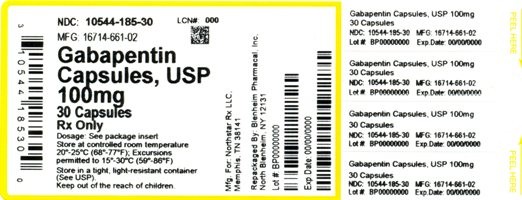
GabapentinGabapentin CAPSULE
| ||||||||||||||||||||||||||||||||||||||||||||||||||||||||||||||||||||||||||||||||
PLEASE, BE CAREFUL!
Be sure to consult your doctor before taking any medication!